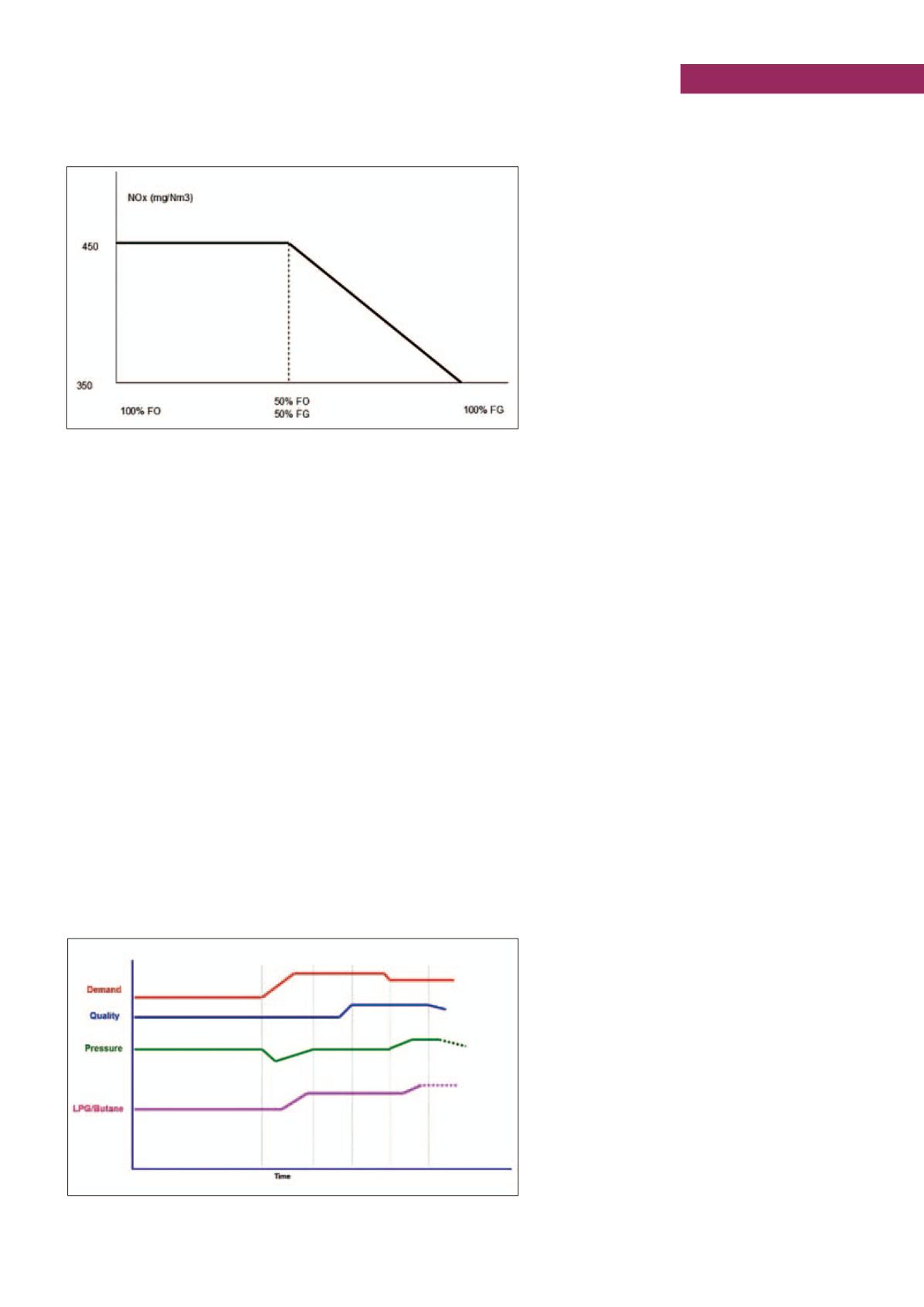

CONTROLLO
tecnica
Automazione e Strumentazione
Settembre 2017
85
in millions of dollars per year. For instance, APC systems have
been successfully designed and commissioned as part of a big-
ger scope to address the specific problem of emissions limiting
the plant load for major units like crude columns or ethylene
crackers. Moreover, controlling the environmental limits (not
just monitoring the environmental limits) in closed-loop pro-
vides owners and operators a distinctive advantage in managing
environmental constraints and regulations with ease.
Fuel Gas Network
Control & Optimization
Fuel Gas Network control is another very difficult control prob-
lem within the refineries and petrochemical plants. Today, it is
common to see sites with an unstable Fuel Gas Network which
becomes a major issues, as any upset can affect the whole site,
impacting both operations and the site energy spend. However,
with APC technology, these sites can benefit from a stabilized
Fuel Gas Network and optimized energy management.
A Fuel Gas Network can be really complex with multiple head-
ers, KO drums, flares, gas recovery compressors, LPG vaporiz-
ers and more. Off-gas flows change continuously (particularly
when the units load changes) and if enrichment gas with a high
heating value is added to achieve the volume balance,
i.e. to control the pressure, the heating value of the fuel
gas increases. The COT controllers on the furnaces will
cut back on consumption which will upset the volume
balance, and the enrichment gases will also be cut back.
This behavior keeps going, leading to a self-propagating
cycle with the system possibly becoming unstable. Fuel
gas instability can lead to units having to cut back load or
result in flaring events - both very undesirable situations.
Fuel Gas pressure and calorific value are interactive
and pose a highly non-linear problem that can only be
addressed using the proper tools and technology. Vol-
ume balance models are integrating processes as pres-
sure builds up as a ramp and exhibit strong non-line-
arity. Model gains can flip signs as the quality effect
of the enrichment gas depends on the current Fuel Gas
Network’s calorific value.
Adding makeup gas can increase or decrease the overall calo-
rific value which may change over time depending on the spe-
cific makeup being used. Adding additional makeup gas has
less of an affect as it approaches the current quality. There is
no way of easily calculating how much enrichment gas should
be added and for how long, as the consumption changes with
additions. However, by implementing APC applications and
creating a
Fuel Gas optimization solution
, organizations can
achieve major results. For example, APC can:
1.Dramatically reduce the variability in the refinery Fuel Gas
system:
- simultaneously stabilize pressure and calorific value;
- stabilize furnace operations;
- stabilize process unit operations.
2.Minimize overall fuels cost:
- typically maximize use of Fuel Oil;
- minimize, whenever possible/convenient, use of enrich-
ment gas (LPG/Propane/Butane/CH4).
3. Strictly respect the furnace’s/stack’s environmental limits
while making money:
- closed-loop control of emissions, not just emissions mon-
itoring;
- minimize fuel cost until the process unit’s con-
straints or emissions limits become active.
4. Help other APC controllers to maximize through-
put and overall profit:
- consistently push local and overall constraints, tak-
ing the benefit of a more stable Fuel Gas Network.
5. Minimize/completely eliminate routine flaring
which is a cost and impacts the environment.
6. Minimize blow down gas recovery compressors
consumption.
7. Reduce the Energy Intensity Index (EII):
- improve furnace efficiency through more stable
firing, enabling further reduction in excess air.
The proper knowledge and APC technology is
required to simultaneously stabilize Fuel Gas pressure
and quality and address the inherent strong non-linear-
Figure 2 - Fuel Gas networks pressure and quality instability
Figure 1 - NOx changing limits


















